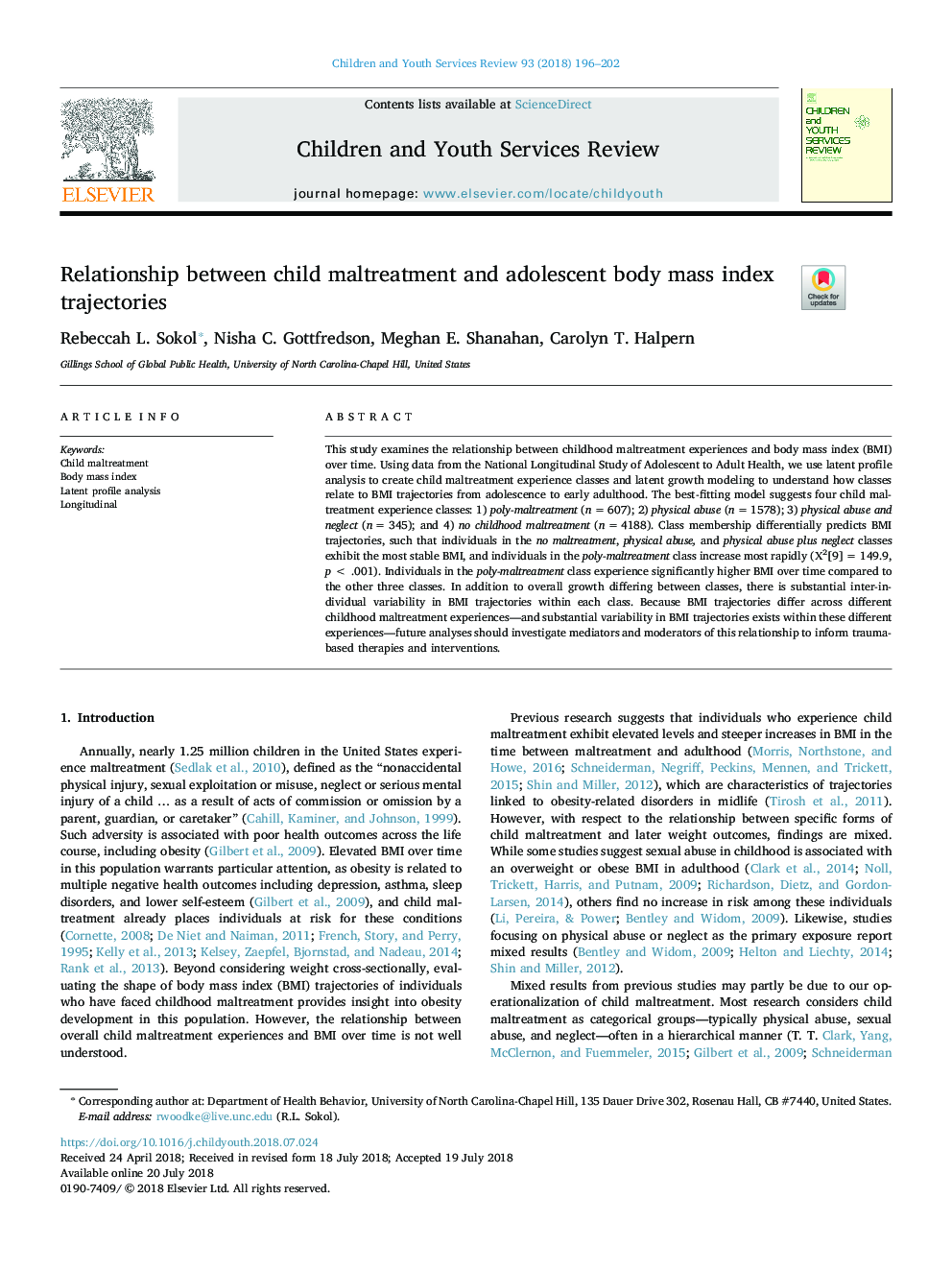| Article ID | Journal | Published Year | Pages | File Type |
|---|---|---|---|---|
| 6832811 | Children and Youth Services Review | 2018 | 7 Pages |
Abstract
This study examines the relationship between childhood maltreatment experiences and body mass index (BMI) over time. Using data from the National Longitudinal Study of Adolescent to Adult Health, we use latent profile analysis to create child maltreatment experience classes and latent growth modeling to understand how classes relate to BMI trajectories from adolescence to early adulthood. The best-fitting model suggests four child maltreatment experience classes: 1) poly-maltreatment (nâ¯=â¯607); 2) physical abuse (nâ¯=â¯1578); 3) physical abuse and neglect (nâ¯=â¯345); and 4) no childhood maltreatment (nâ¯=â¯4188). Class membership differentially predicts BMI trajectories, such that individuals in the no maltreatment, physical abuse, and physical abuse plus neglect classes exhibit the most stable BMI, and individuals in the poly-maltreatment class increase most rapidly (Χ2[9]â¯=â¯149.9, pâ¯<â¯.001). Individuals in the poly-maltreatment class experience significantly higher BMI over time compared to the other three classes. In addition to overall growth differing between classes, there is substantial inter-individual variability in BMI trajectories within each class. Because BMI trajectories differ across different childhood maltreatment experiences-and substantial variability in BMI trajectories exists within these different experiences-future analyses should investigate mediators and moderators of this relationship to inform trauma-based therapies and interventions.
Related Topics
Health Sciences
Medicine and Dentistry
Perinatology, Pediatrics and Child Health
Authors
Rebeccah L. Sokol, Nisha C. Gottfredson, Meghan E. Shanahan, Carolyn T. Halpern,
